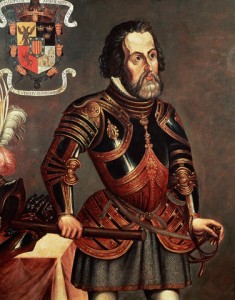The first European contact with chocolate came when Montezuma introduced Hernán Cortés, a Spanish conquistador, to xocolatl in the 16th century. Antonio de Solís, Philip IV’s official Chronicler of the Indies, described Montezuma customarily taking a chocolate beverage after meals, as part of a sumptuous daily ritual.
The first recorded shipment of chocolate to Europe for commercial purposes was in a shipment from Veracruz to Sevilla in 1585. It was still served as a beverage, but the Europeans added cane sugar to counteract the natural bitterness and removed the chili pepper while retaining the vanilla, in addition they added cinnamon as well as other spices.
Until the 16th century, no European had ever heard of the popular drink from the Central and South American peoples. It was not until the Spanish conquest of the Aztecs that chocolate could be imported to Europe. In Spain, it quickly became a court favorite. In a century it had spread and become popular throughout the European continent.
For hundreds of years, the chocolate-making process remained unchanged. At the end of the 18th century, the first form of solid chocolate was invented in Turin by Doret. In 1819, F. L. Cailler opened the first Swiss chocolate factory. In 1828, Dutchman Coenraad Johannes van Houten patented a method for extracting the fat from cocoa beans and making powdered cocoa and cocoa butter. The German company Jordan & Timaeus sold the first known chocolate bar made from cocoa, sugar and goat’s milk in 1839. In England, the company, J. S. Fry & Sons discovered a way to mix some of the cocoa butter back into the Dutched chocolate, and added sugar, creating a paste that could be molded. This led to the first British chocolate bar in 1847, followed in 1849 by the Cadbury brothers.
Daniel Peter, a Swiss candle maker, joined his father-in-law’s chocolate business. In 1867, he began experimenting with milk as an ingredient. He brought his new product, milk chocolate, to market in 1875. He was assisted in removing the water content from the milk to prevent mildewing by a neighbor, a baby food manufacturer named Henri Nestlé. Rodolphe Lindt invented the process called conching, which involves heating and grinding the chocolate solids very finely to ensure that the liquid is evenly blended. This enabled Milton Hershey to make chocolate even more popular by mass-producing affordable chocolate bars. [source: Wikipedia]


